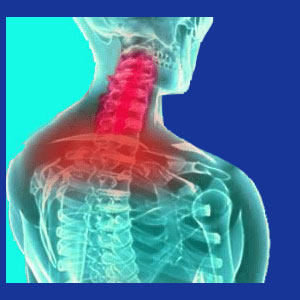
Neck injury is a dreaded event, since serious trauma to the cervical spine or spinal nerve structures can enact dire consequences in some patients. Fortunately, most injuries to the neck are not overly serious and will heal completely with time and appropriate medical care. Physical trauma is always a controversial topic within the musculoskeletal healthcare system, since many chronic pain syndromes are blamed on previous injury, despite the body’s prime imperative being the ability to heal. Additionally, the fact that many patients have lasting pain months, years or even decades after a minor or moderate injury shows holes in the theory of trauma as being one of the main causations for long lasting neck pain symptoms.
This resource section provides detailed coverage of a diversity of injuries that can befall the neck region, as well as explaining their usual consequences.
Neck Injury Discussions
Please enjoy our articles dedicated to discussing the various types and degrees of possible injury to the neck:
Cervical spine injury describes a condition in which the bones or soft tissues of the neck are traumatized and suffer damage.
Cervical spinal cord injury is the worst possible type of neck damage, since the cervical cord is one of the most sensitive neurological tissues in the body.
A broken neck means that one or more vertebral bones have been fractured in the neck. A cervical spinal fracture can occur to any of the various vertebrae in the C spine.
Fractured vertebrae in the neck entail actual breaks in the vertebral bones. While neck pain seems logical for new fractures, the diagnosis may be illogical for old fractures which have shown themselves to heal completely, but are still blamed for enacting chronic neck ache.
A cervical compression fracture is when one or more bones in the neck break, usually due to the weight of the body more than the force of injury. Compression fractures are often asymptomatic, but can also enact serious health issues, including spinal instability. These are most commonly experienced in the elderly and those suffering from osteoporosis or other bone density issues.
Neck sprain and neck strain are non-specific soft tissue injuries usually involving small muscle, tendon or ligament tears.
Whiplash neck injury can result from automobile accidents, sporting accidents or trips and falls. Whiplash neck pain can come on acutely, and immediately, or may occur with delayed onset in some circumstances. Whiplash itself is a condition in which the head is forcibly thrown forward and then back, hyper-extending and hyper-flexing the cervical spine and often causing neck injury.
Whiplash neck injury often affects the soft tissues of the neck, rather than the spinal structures themselves.
Cervical nerve damage can result from problematic spinal abnormalities, disease process, traumatic injury or as a complication of neck surgery.
Scar tissue in the neck can also come from repetitive injury, but is often linked to the unwanted side effects of cervical spinal operations.
Car accident neck pain is one of the most common sources of chronic neck symptoms.
Neck pain from falling usually involves landing in such a way which snaps the neck forward or back, or involves falling on the head.
A neck injury attorney is a plaintiff law specialist who handles cases of trauma caused by accidental or purposeful infliction of injury.
Neck injury settlements are the result of lawsuits directed at achieving justice for traumatic cervical spine injury.
Atlas subluxation might occur from injury or may also be present for idiopathic reasons.
Neck injuries during birth can create lifelong health problems, disability and even death.
Herniated Disc Neck Injury
Damage to the neck often takes the form of herniated discs. However, in a great number of cases, a particular event blamed for causing a herniation may not be responsible.
Many bulging discs in the neck exist long before the accident blamed for causing them. However, there was no pain and therefore no reason to search for them using MRI studies. The proof of the age of a herniation may be there regardless, in the form of calcification, or osteochondral bar formation, which takes a long time. Why this is rarely brought to light during civil trials is beyond our comprehension.
Cervical Spinal Injury Considerations
Fractures to the neck sound really bad, but many are not as serious as they seem. Broken vertebrae stand every chance of healing 100% and leaving no residual pain in most healthy patients. Spinal nerve or spinal cord damage in the neck is a completely different story. It is highly unlikely that a nerve or cord injury will heal fully, if at all, and most cases will leave lasting or permanent symptoms and/or functional limitations.
One of the most common sources of cervical cord and nerve injury is surely neck surgery. Although designed to help the pain, the barbaric, unenlightened and often completely contraindicated techniques used typically do more harm than good. This is one of the many reasons why we are so notoriously anti-surgery.
If you have pain after a neck injury has healed, you need help. Our proven Cure Back Pain Program can cure pain that lingers from a wide range of causes. Best of all, you can access it immediately for help right now from anywhere in the world.





